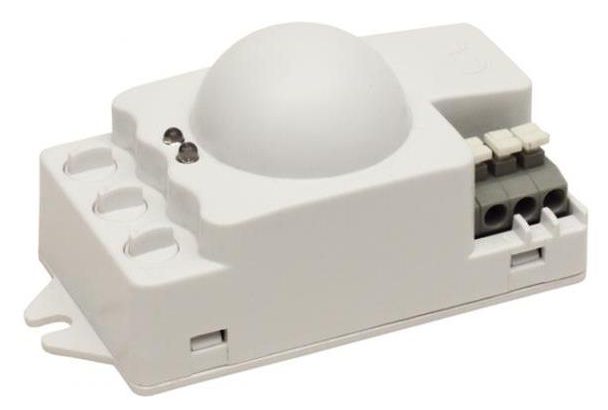Microwave Sensor vs PIR Sensor: Which is Better for Motion Detection

Ever wonder which motion sensor is better for your home or business automation system? We look at two of the most popular options – microwave sensor and PIR (Passive Infra Red) sensor – to compare how they work, their advantages and disadvantages, and whether one might suit your needs. Read on to find out!
What is Passive Infrared Sensor?
A PIR motion sensor is a device that detects movement in its field of view. These devices are commonly used in security systems and are often called “passive infrared” or “PIR” sensors.PIR motion sensors work by detecting changes in the infrared (heat) radiation levels emitted by objects in their field of view. When an object moves, it generates a slight temperature change, which causes a corresponding change in the infrared radiation emitted. The sensor’s detectors can detect these changes and trigger an alarm or other response.PIR motion sensors are relatively inexpensive and easy to use, making them a popular choice for security applications. However, they can also be used for non-security, such as triggering lights or automated doors.
What is Microwave Motion Sensor?
A microwave motion sensor is a type of radar that uses microwaves to detect movement. These sensors emit microwaves in a particular direction and then measure the reflection of objects in their field of view. If there is movement, the reflection will be different than expected, and the sensor will trigger an alarm. Microwave motion sensors are often used in security applications because they can detect moving objects even in complete darkness.
Microwave and PIR Motion sensors (Passive Infrared Sensors) are different.
Both are occupancy sensors or Motion Sensors, but their working principles differ. The microwave sensor is active as it emits a microwave signal for detection. PIR sensor is a passive sensor as it senses infrared signals emitted by various objects, including the human body.
Microwave Motion sensor


As shown in the picture, it emits frequency in the microwave region and will analyze the returned/reflected microwave frequency for determining motion.
PIR Motion Sensor | Passive Infrared Motion Sensor


PIR sensor houses a pyro-electric sensor, as shown in Picture 2. PIR sensor generates energy when exposed to heat. The human or animal body radiates energy in the form of infrared radiation. Hence when a human/animal comes in the range of the PIR motion sensor, it receives thermal energy, and hence motion is detected by the sensor.
Difference between the microwave sensor and PIR sensors.
➨The microwave motion sensor is more sensitive compared to the PIR sensor.
➨The microwave motion sensor has a higher coverage range than the PIR sensor.
➨The microwave motion sensor has a continuous field of the detection zone, whereas the PIR Motion sensor has a slotted detection zone. Hence PIR sensor may miss out on objects. Therefore microwave sensors are better in security applications compared to PIR Motion sensors.
➨PIR Sensors have a higher false alarm rate than Microwave motion sensors.
➨Microwave Motion sensors are slightly costlier compared to PIR Motion sensors.
➨Did you know that microwave motion sensors consume more electricity than PIR motion sensors? PIR motion sensors only use about 0.8 to 1.0 watts, while microwave motion sensors use about 1.1 to 1.5 watts. Despite this difference, microwave motion sensors are still suitable for certain applications.
➨Even though there is a difference between the two, microwave motion sensors are still appropriate for specific purposes. They are particularly useful for large-area security applications.
Conclusion
In conclusion, microwave and PIR sensors have their advantages and disadvantages. Both types of sensors can be used in security applications with great success. Still, the choice will depend on what coverage area is required, how sensitive the detection needs to be, and whether false alarms are an issue. A microwave motion sensor‘s higher sensitivity and range make it ideal for large areas or multiple rooms, whereas a PIR Motion Sensor could offer better accuracy for smaller spaces. It is essential to understand each type of sensor before making your decision so that you can choose one which meets your specific requirements.
Comments are closed.

[…] another kind of detector, the sensor device consists of field transceivers which have microwave oscillator and antennae so that continuous wave energy is transmitted into the specified area. […]